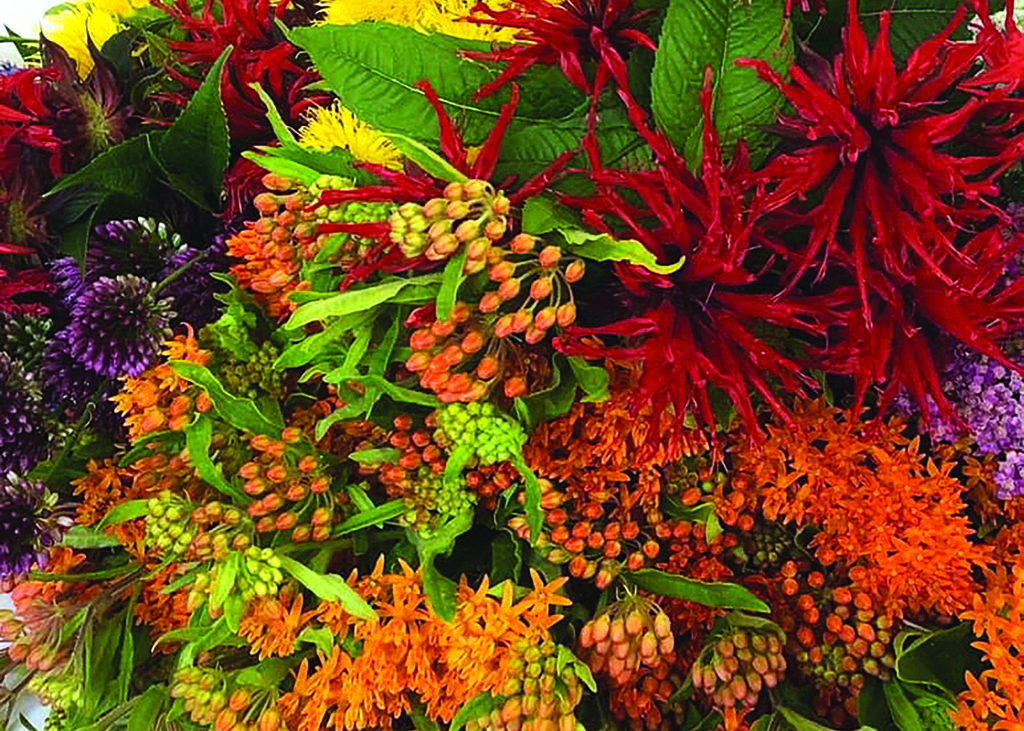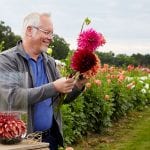
Kennedy’s Flowers in Grand Rapids features these locally grown favorites in their product mix.
In the wake of higher freight costs and limited supply brought on by COVID-19, local flower farmers are filling a much-needed fresh product gap — while florists adapt their expectations, writes Julie Martens Forney in the September/October issue of Floral Management.
Diversity Delivered
Local flower growers enable florists to tap into a wide variety of flowers.
“Florists like to try new things, and I like to try new things,” says Karen Yasui, of Petalland Flower and Herb Farm in Tullahoma, Tennesse.
Holly Haveman, of Kennedy’s Flowers and Gifts in Grand Rapids, Michigan, likes using local material such as pussywillow and forsythia. Local curly willow is a year-round staple, she says.
Cathy Wallace, owner and manager of Heaven Scent Flowers & Gifts, located in Eagle Point, Oregon, uses the region’s hardy greens, including evergreens, grape holly and rosemary. “People are enamored with them because they last and they’re unique.”
Conquer the Learning Curve
Both florists and farmers agree that locally grown material requires some education for everyone to succeed. “Sometimes the local growers offer you such a unique item that you have to stretch your creativity as a designer,” Wallace says.
Jamie Rohda, of Harvest Home Flowers in Waverly, Nebrasksa, handles that hurdle with her florist clients by letting them test a new crop. “When I try something new for the first time, I’ll take it to a few key florists. They test the crop; I test the price,” she says.
Challenges of Local Flowers
Like any relationship, the farmer-florist connection can encounter hurdles. Product volume is one. “I can’t pull together product from all corners of the world. The florist has to go to extra effort to order from places other than me. I also can’t deliver tons of a particular flower,” Rhoda says.
For Haveman, the only disadvantage of locally grown material is that the season isn’t as dependable, and the quantities may not be enough to support what she sells.
A Solution to Supply Chain Woes
Can local flower growers help bridge gaps in the supply chain? In season, the answer is yes, to a degree. Finding a local flower grower shouldn’t be difficult. Judy Laushman, executive director of the Association of Specialty Cut Flower Growers, cites unprecedented growth in membership numbers — a 62 percent increase from 2017 to 2020. Haveman also suggests visiting farmers’ markets to identify local flower growers.
For more tips on how florists can best work with local flower growers, check out the September/October issue of Floral Management online.
Molly Olson is a contributing writer for the Society of American Florists.





